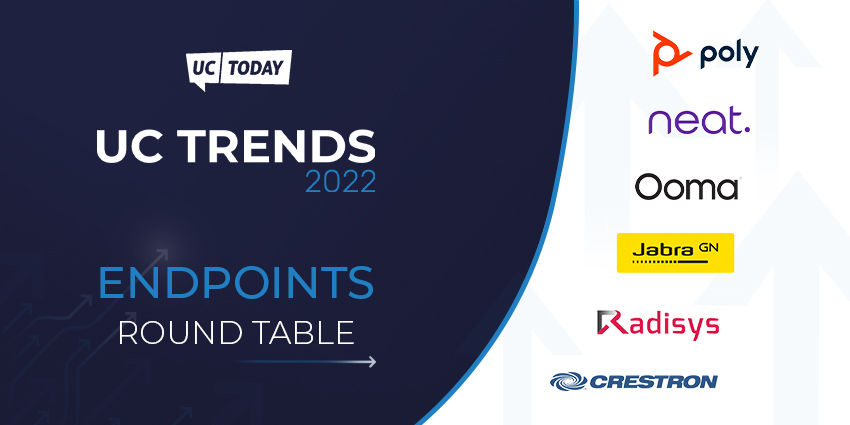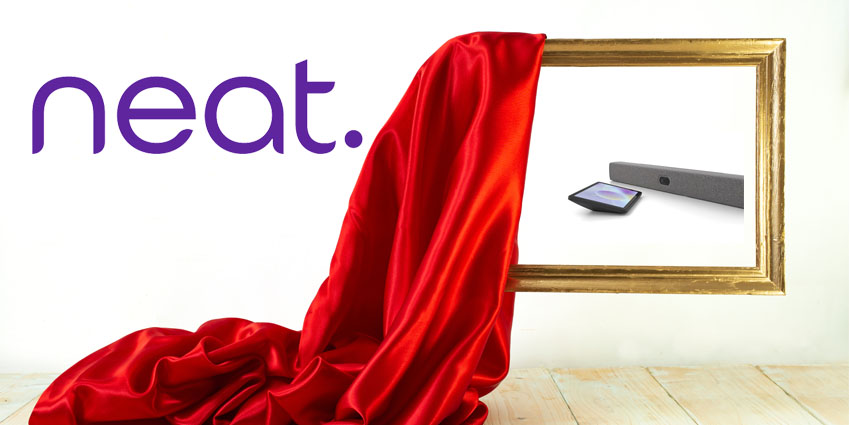The past two years has seen the world of communications change irrevocably.
Demand for UCaaS tools, collaboration technologies, meeting room solutions and other cloud-based technologies have skyrocketed since the outbreak of the pandemic. But so too has hardware, the backbone of IT and a topic that can sometimes be overlooked when talking about exciting advancements in technology.
It was endpoint devices that helped organisations stay in touch in the early days of social distancing restrictions, and they have continued to remain important pieces of the IT puzzle as employees move to a hybrid working model.
We spoke with experts from Radisys, Neat, Oooma, Jabra, Poly, and Crestron to discuss the changes they’ve seen in endpoints over the last two years, as well as to get an insight into the challenges and opportunities that customers face around endpoints moving into 2022.
What are the most significant customer trends from 2021?

Al Balasco, Head of Media, Core and Applications Business at Radisys:
The pandemic-induced surge in the use of UC&C applications, such as Zoom, Cisco, and BroadSoft, has demonstrated to users where they have the most utility and which collaboration services are not well served, according to Radisys’ Al Balasco.
“This provides an opening for mobile operators to offer complementary services that can exploit the benefits of their networks, facilities, and service level capabilities while building their brands for more control over customer relationships and experiences,” he noted.

Brad Hintze, Executive Vice President Marketing at Crestron:
Crestron’s Brad Hintze added that in the era of hybrid working it is crucial for every space – regardless of size – to have video conferencing and collaboration technology, as well as a means to manage room use.
“Every space should include great audio quality, cameras that capture everyone in the room, and an easy way to control the technology and start a meeting,” he listed.
“There is no one-size-fits all solution. Different sizes of room require different types of solutions, but ideally the experience is the same.
“But there is more to it. Having a hybrid workforce means that you don’t know in advance where people will be (remote, in the office, or travelling), so you need a very intelligent way to manage the rooms in your office, to enable you to release rooms when nobody enters“
Simen Teigre, CEO, Neat:
Video collaboration is a customer trend that is very much here to stay, according to Neat boss Simen Teigre. As a result, of this trend, video endpoints are a requirement for most organisations that have adopted a hybrid working model to ensure that their distributed workforce can continue to collaborate comfortably.
“In the last year, businesses have focused on ensuring their distributed teams have the technology and processes in place to continue to innovate and be productive no matter where or how they choose to work,” he stated.
“At the same time, businesses have recognised the importance of face-to-face interaction, and how technology that brings people together is key to the success of remote and hybrid work. Building a sense of community has been key to helping businesses transition to the new way of working”
What will be the top challenges facing end customers in 2022?

Chris Burgy, VP of Corporate Development at Ooma:
One of the top challenges facing end customers going into the new year is that of balancing demand from internal stakeholders, according to Ooma’s Chris Burgy.
“Balancing all the conflicting demands from internal stakeholders for unified communications solutions that are simple and affordable yet powerful,” he said.
“Further, the sunset of the copper network and the resulting price increases for POTS lines has created a predicament around critical devices that still communicate on analogue lines.”
Nigel Dunn, Managing Director, EMEA North at Jabra:
Jabra’s Nigel Dunn reckons a massive challenge facing end customers is aligning and adopting practices that fit in with the hybrid working model. Hybrid working is not a one-size-fits solution; organisations will need to consider their own unique needs in order to optimise hybrid work productivity, he added.
“2022 will require new leadership perspectives built on employees’ preferences and viewpoints,” he said.
“Organisations must communicate clear principles and guidelines; they are now tasked with creating high-trust environments, making expectations clear for staff while allowing them to retain autonomy, and providing the tools to be productive and get the most from their working arrangements”

Simen Teigre, CEO, Neat:
Another challenge for organisations moving forward with a hybrid working model is finding a way to re-create the spontaneous encounters that happen in an office through video, according to Neat’s Teigre.
Endpoint devices should also be “packed” with innovative capabilities that foster the same collaboration and casual chats that are shared in an office environment, he added.
“Video communication needs to move beyond meetings to those spontaneous, casual encounters that happen at the water cooler, around the coffee machine or other recreational areas,” Teigre stated.
“For example, as a remote employee, how can technology help you capture and enrich encounters to mimic bumping into a colleague in the kitchen back at the office while they grab a bite to eat or walking to a meeting and quickly exchanging thoughts?
“Today’s video devices also need to be packed full of innovative capabilities that encourage collaboration, brainstorming, and off-the-cuff comments during ad-hoc discussions among individuals and teams located anywhere. That way, brilliant ideas are more likely to emerge and not get left behind.”
Which technology will deliver the greatest value to your customers in 2022?

Paul Clark, SVP EMEA at Poly:
Technology that levels the playing field for all employees will deliver the greatest value to end customers next year, according to Poly’s Paul Clark.
To make sure they are utilising the right technology to do this, organisations must understand their employees’ personas and working styles, as well as defining what the needs of their future office are and how the space will be used.
“Implementing tech that supports equal participation for everyone – whether they’re dialling in from group spaces, personal workspaces, in the office, or working remotely – will be key in making hybrid working a success in 2022 and beyond”
“For example, implementing video conferencing solutions that bring broadcast-quality to every meeting so everyone can be seen and heard clearly will be key.
“Noise cancellation headsets and acoustic fence technology can help employees focus, turning any workspace into an instant quiet zone.”

Nigel Dunn, Managing Director, EMEA North at Jabra: businesses
Jabra’s Dunn echoed this sentiment, adding that businesses will see the most value from seamless video collaboration solutions that make connecting from anywhere possible and facilitate better inclusivity and teamwork.
Intelligent devices with AI and analytics will play a key role in helping companies to address concerns with hybrid work models, and lead to higher performing teams with a healthier work-life balance, he added.
“Businesses are already seeing the benefits of being able to make insight-driven decisions remotely, such as how to utilise meeting spaces based on usage and room occupancy data,” he stated.
“Companies will increasingly rely on intelligent software and analytics to manage the quality of communications with customers. Managers can also be proactive and identify challenges for staff such as noisy environments that impact concentration, and potentially increase stress levels. This will open up conversations about hybrid-work changes and employee well-being.”
Al Balasco, Head of Media, Core and Applications Business at Radisys:
Radisys’ Balasco flagged recent headline-making ransomware attacks as causing concerns for customers and their employees, resulting in them seeking technology that ensures endpoint security and privacy.
“Consumers are often concerned about whether what they say to their smart speakers or phones is being used by Big Brother,” he noted.
“Especially in business contexts, if the technology can be contained in a service provider or enterprise network there can be lower barriers to trust. And this transcribed content [in network speech-to-text processing] is often something that is intended to be accessible to a limited audience”







